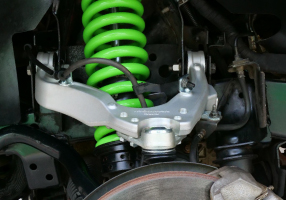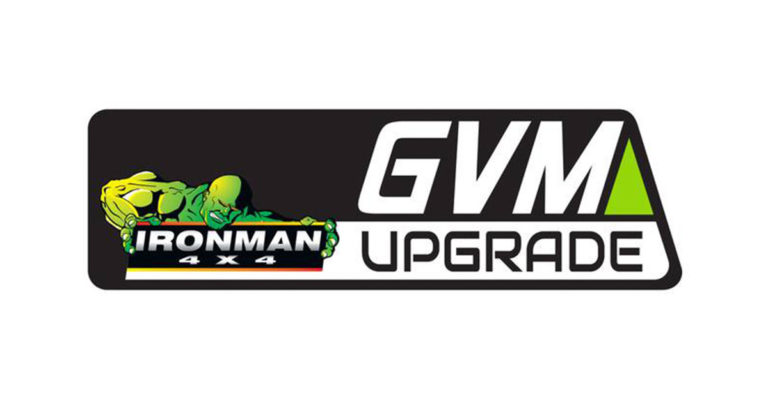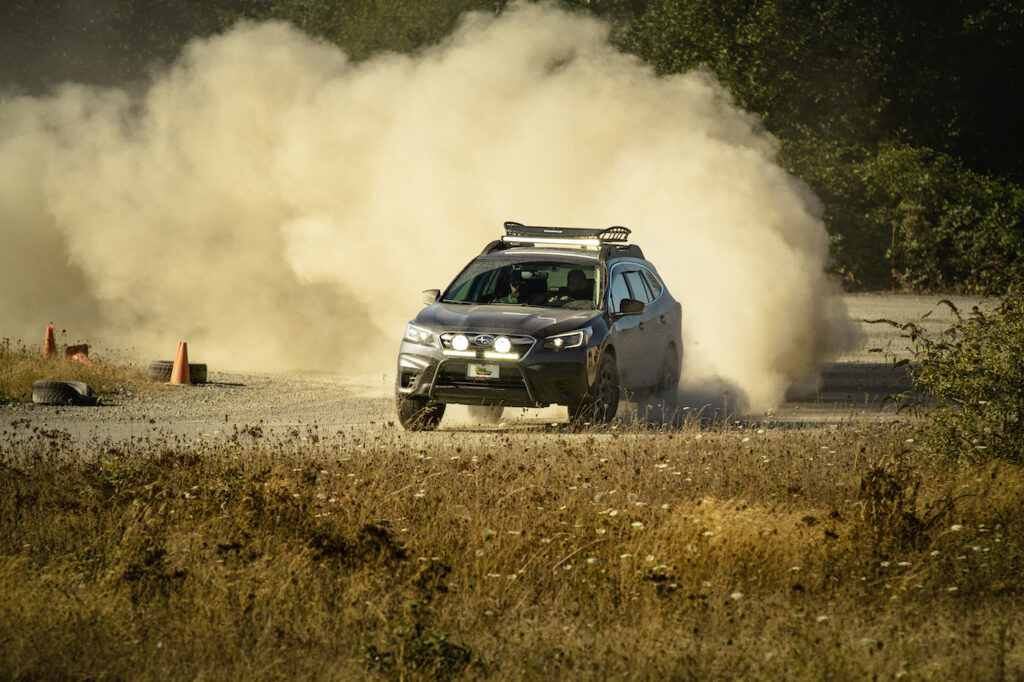
Subarus are becoming popular weapons for off-road adventures. We take a look at Ironman 4×4’s Aussie-developed All Terrain Suspension kit for Subarus.
For most Australians the idea of a project vehicle for off-road adventures usually sees them gravitate towards the likes of a Ford Ranger or something from Toyota. But that’s never been necessary for many people who realise that Subarus have plenty of rough-terrain capability, including staff from this publication; I have my project Subaru, and so does our Cristian Brunelli with his XV.
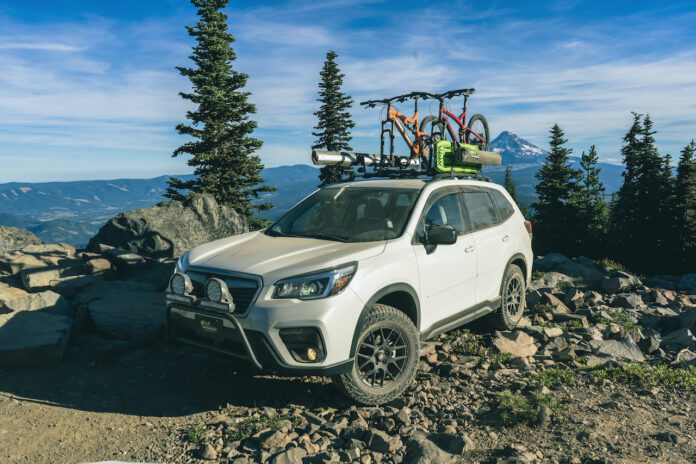
Regardless of whether you choose a Toyota, Subaru or Ford you’re going to find that the standard suspension is a jack-of-all-trades compromise, mostly focused on the average driver…who isn’t going to be reading this article because they’re too busy driving around the suburbs. If you are reading this piece, then your car’s performance is important to you, and you’re something of a rough-terrain driver.
Now I’ll bet you can probably recite the power and torque figures for your car, but it’s unlikely you’d know the spring rate or shock rebound settings. And we all know how important tyres are to every aspect of vehicle performance, but as suspension provides that vital link between the grip of the tyres and power of the engine it really is the key to vehicle performance. Get your suspension right, and your car will be safe, effective and confidence inspiring, get it wrong… and you won’t want to drive the car.
Why suspension design is so difficult
Suspension design is incredibly complex because there are so many inter-relating variables – change one, you affect many more. For example, stiffer springs at the front mean you need to change the shock (damper) rates, and that in turns means the sway bar (anti-roll bar) probably needs to change. A stiffer front also changes the oversteer/understeer characteristics of the car, so a corresponding change to the back is required to balance it all out.
If that’s not enough, there’s then diametrically opposed needs. On a road car, you want a soft ride to deal with speed bumps and rough bitumen, but also a measure of manoeuvrability, handling like a Porsche but riding like a Camry.
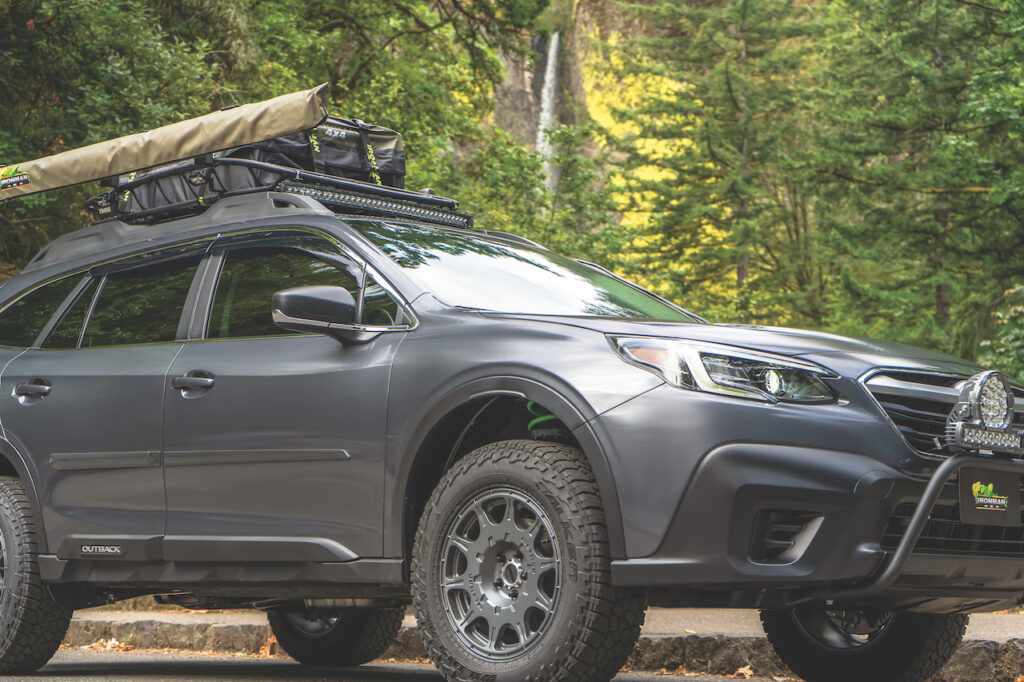
The problem becomes even more complex for vehicles like off-roading Subarus which need to work well on sealed roads as well as on sand, mud, rocks, and when towing. For example, when driving off-road at slow speed you want a soft, flexible, long-travel suspension which allows the wheels to move easily relative to each other. But run that setup on-road and you’ll get a jelly-like ride which will feel awful and would be dangerous, and it wouldn’t be any good for carrying a load either.
The OEM (original equipment manufacturer) suspension on any car is, like all suspensions, a compromise. The OEM engineers need to strike a balance between every possible user – from the suburban grocery getters, to dirt-road cruisers, to off-roaders, and they also have to build to a price set by the bean counters. So in the same way you might change your Subaru’s tyres from standard to an all-terrain type that better suits your off-roading needs, so too you should consider changing the stock suspension to a design more focused to your needs if you’re planning on using your vehicle for rougher terrain than the average owner.
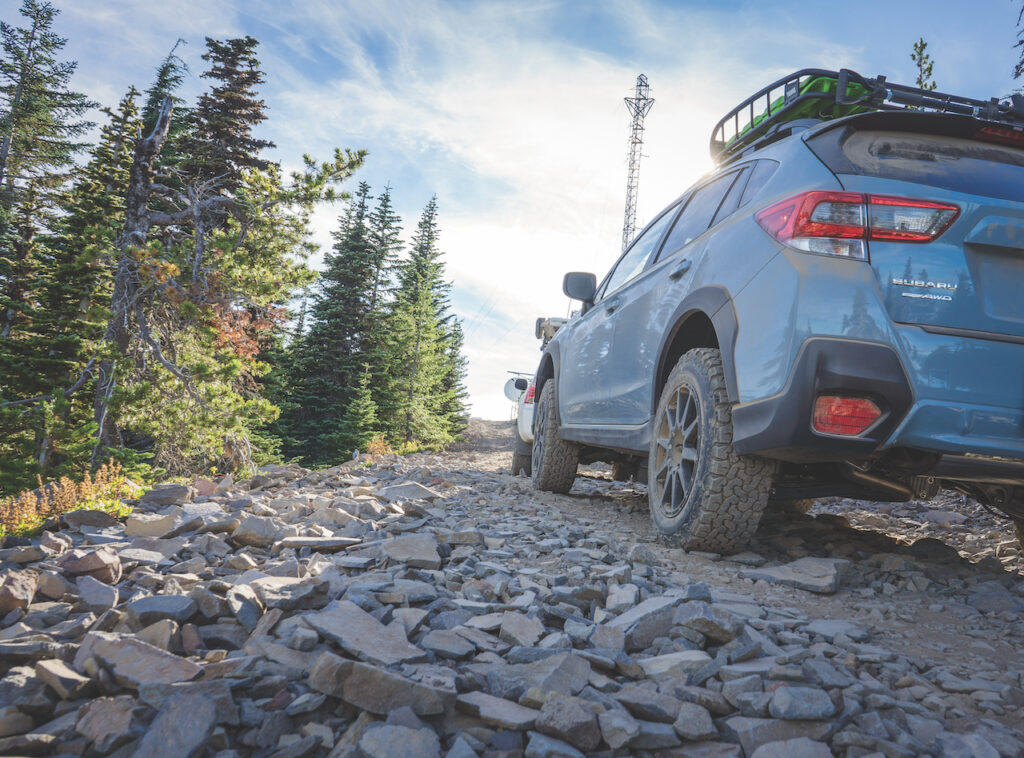
Measure twice…
The easy way to ‘improve’ suspension is simply to fit taller springs. Instantly, the car is raised, and looks ‘tuff’, with improved angles and clearance – all good benefits for off-roading. The new springs are stiffer, so there’s less sag when loaded or towing. Superficially, it looks like the job is done.
But with something as complex as suspension, the answer is never that simple, so let’s look at the development process used by suspension specialists Ironman 4×4 for its Subaru XV suspension lift kit, one of its new Subaru range which also covers Forester and Outback (latest generation vehicles only).
The process starts with a thorough evaluation of the OEM suspension and its relationship to the car at Ironman 4×4’s Melbourne HQ – just a few examples of many parameters explored are the length of the shock at maximum and minimum compression, angles of CV joints and driveshafts, space around the suspension components, and sprung vs unsprung masses. The springs are measured to determine their compression rates under force, and the dampers are put on a dyno to thoroughly model their reactions under different loads – for example, a damper will react differently to the same force depending on whether the force is applied quickly or slowly, which in the real world might translate to travel over dirt-road corrugations at high speed, or over a rock at low speed.
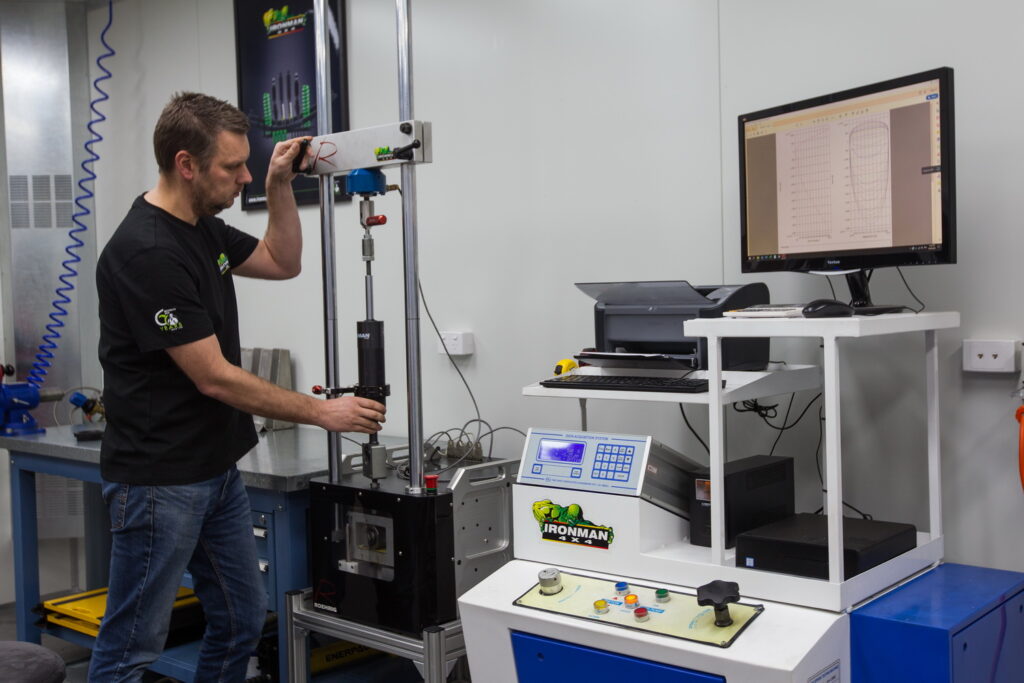
But merely measuring the shock on a dyno isn’t enough for real-world modelling. For instance, the shock acts vertically, but the control arm moves in an arc. Also, the shock is set a little inboard from the wheel, so say 20mm of vertical movement on the wheel might be only 15mm of spring and shock movement – this is known as the motion ratio. So once the shock’s exact characteristics are known in isolation on the dyno, a model is used, in this case the black Subaru XV you see in these pictures, to determine how it will work when installed on the car.
At the same time as the measuring is going on, objectives are set. Given all suspension is a compromise, what’s going to be the priority? Cost is one area where the aftermarket has an advantage over OEM, as OEMs look to save even $0.20 per unit if they can because their volumes are so high, meaning a few cents saved translates to potentially millions of dollars. But, unfortunately for the owner, if cost is a primary factor then everything else is compromised. On the other hand, the aftermarket is less price-sensitive due to smaller volumes, and has to offer a more focused product that’s better for its target users. In the case of the Ironman 4×4 suspension to suit Subaru, the objectives were: improved off-road capability, better load carrying capacity, better durability and improved on-road handling, plus Ironman 4×4’s ‘flat-ride’ handling criterion.
Building battle-ready suspension
With the objectives set and measurements completed, it’s time to start the design. One good way to meet some of the off-road objectives set is with a properly engineered suspension lift. See, this offers huge benefits, like improved approach, ramp and departure angles, and in the case of the fully-independent-suspended XV, greater ground clearance too.
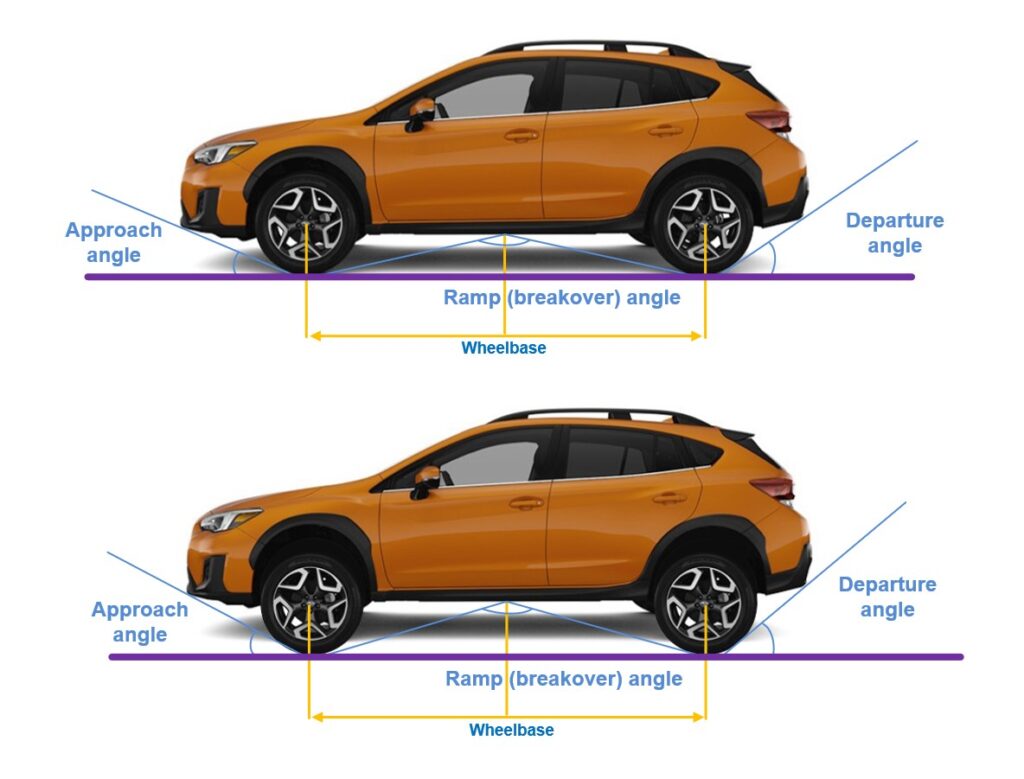
But how high can you, or should you lift a car? At some point, the law of diminishing returns kicks in, and there are also physical limits such as CV angles and wheel alignment parameters, like camber limits. That’s where the measurements come in, along with a lot of physics and engineering calculations. For example, any given suspension has a certain amount of upwards travel, and downwards travel. Here’s a look at the back of an XV, with the suspension at full downward travel (droop):
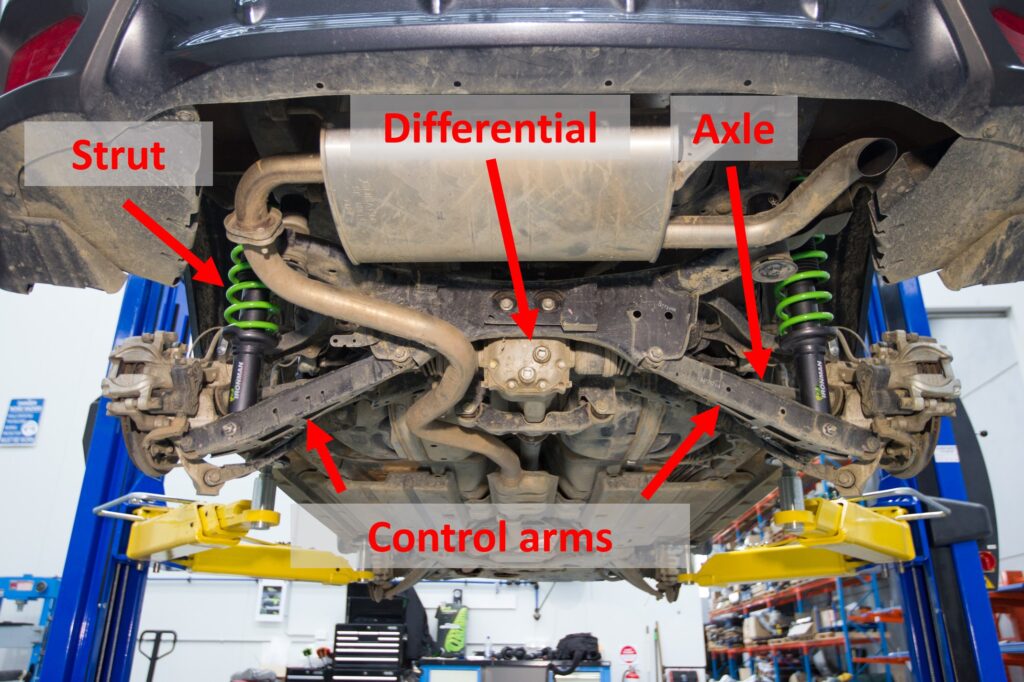
When you lift a car you typically shift the neutral point of the suspension downwards so while the total range of travel remains the same, there’s a little less downtravel and a little more up travel. But if you reduce down travel too much, the suspension will be ineffective, if not dangerous. The diagram below shows the concept of range of movement with up and down travel:
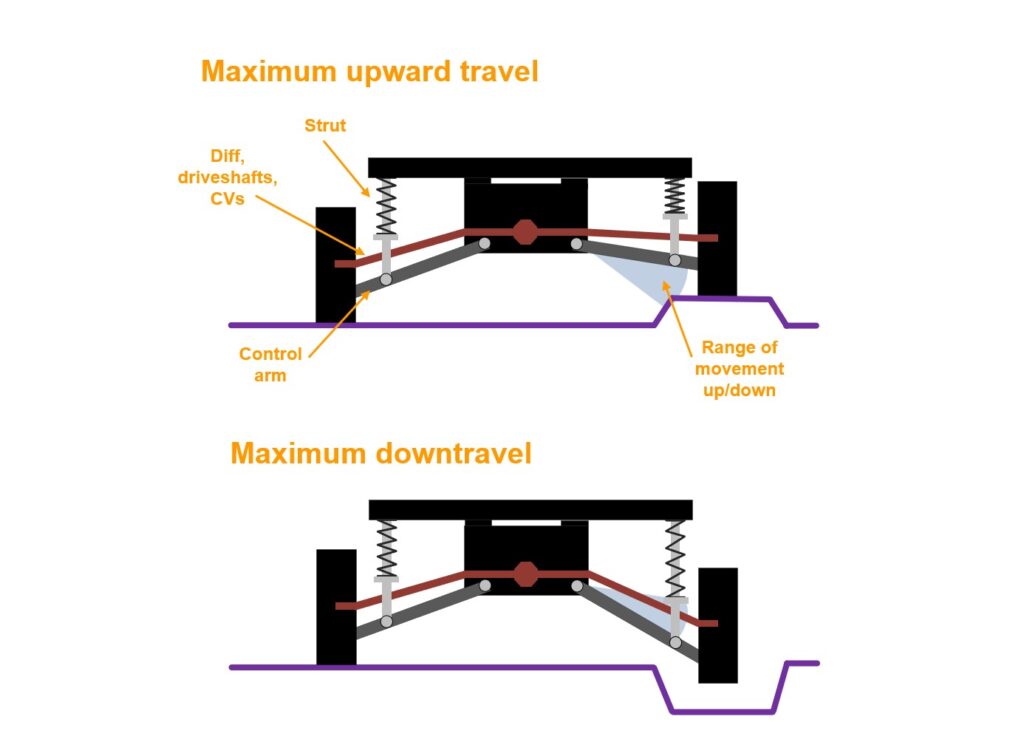
Imagine you’re driving along on a nice flat road, then the left front wheel hits a pothole. That’s one example of when you want down travel from your suspension. But how much down travel do you need, and how much extra can be gained from lengthening the shock without exceeding other critical limits? The answer is, again, based on measuring and calculating limits, with Ironman 4×4’s engineers interpreting the results based on their many decades of experience designing and developing suspension systems for hundreds of different vehicles.
The forces are significant – even in the relatively light Subaru XV with short-travel suspension, the wheel travelling over a bump could generate a force of more than five tonnes, and see the suspension moving up or down at five-metres/second over a period of less than a one tenth of a second. If those forces aren’t anticipated and accounted for in the design of the suspension, then the best case is you’ll have a poor-handling car, and the worst case is broken components. Neither are desirable, so part of Ironman 4×4’s design process is calculating “maximum hit” scenarios so that when a big hit happens, the considerable energy in the ‘hit’ is dissipated across the spring, shock and bump stop, each of which is individually measured on a dyno as input into an overall suspension design model.
Another consideration is the CV joints, which need to work at a greater angle when the suspension is lifted and that weakens them. How far can you go before that’s a problem? Calculations and experience is again the answer, but sometimes there are ways to lift a car and return a CV angle back to within limits. In the case of the rear of the XV, Ironman 4×4 has designed a subframe alignment kit which relocates the differential and control arms, thereby returning the CV angles to within acceptable limits. This had the effect of slightly increasing the angle of the rear driveshaft (from gearbox to differential), but given the length of the driveshaft relative to the vertical drop that was a minor angle change so the trade-off was worth it. The diagram below shows the concept:
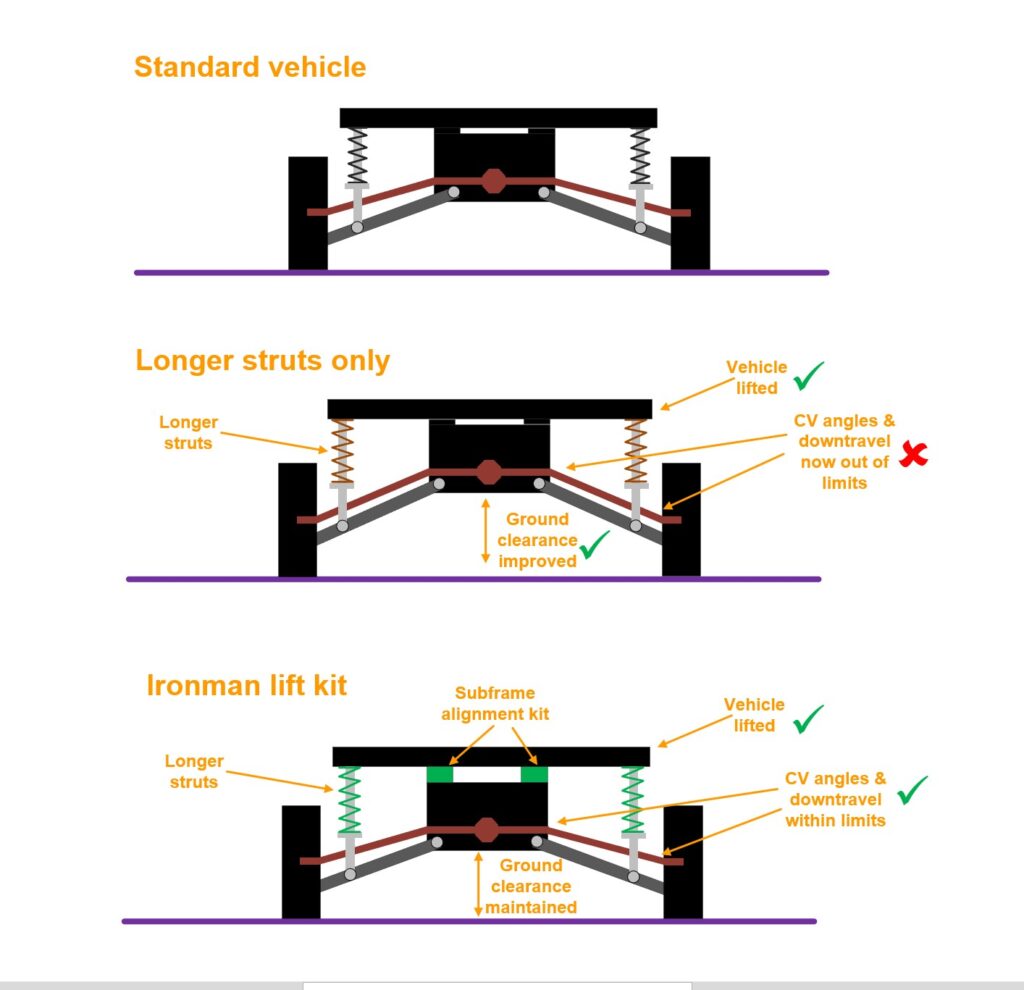
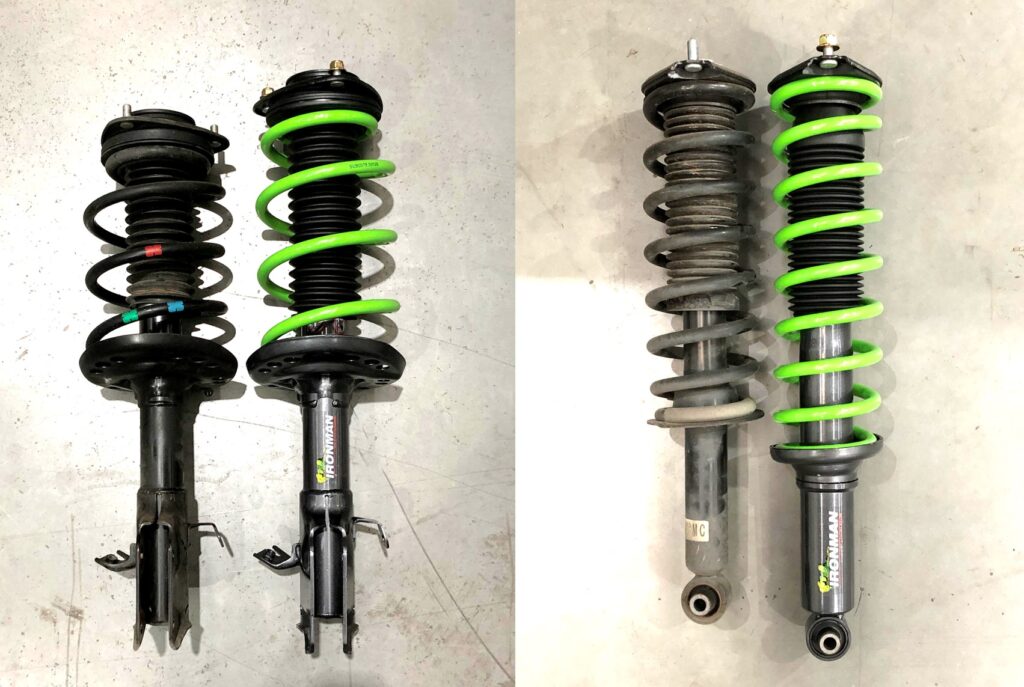
The effect of the subframe alignment kit is to lift the rear of the vehicle, but maintain the original angles for the CV joints and control arms. The front of the XV is also lifted, but that didn’t require an alignment kit because after the lift everything was still within tolerances. Ground clearance isn’t improved at the back, but it is at the front which was the lowest part of the vehicle by about 15mm, so there’s a significant net improvement in ground clearance from about 220mm to 257mm with stock tyres – that’s a figure greater than a 4WD like the Ford Ranger can manage, even if you fitted 33-inch tyres.
Another design factor for off-road suspension is durability, and a big part of that is heat management. When a vehicle’s suspension springs compress or extend, without dampers the vehicle would bounce along the road, much like a rubber ball dropped on a hard surface, slowly dissipating energy as it bounces. The job of dampers is to damp out that bouncing as soon as possible, which means dissipating that energy very quickly. As energy cannot be destroyed, it has to be turned into something else, and that’s heat. This means that shock absorbers are a bit like brakes, turning kinetic energy into heat. And just like brakes, it’s bad news when shocks overheat as they fail and stop providing any damping at all. For example, cavitation can occur which is when the high-pressure gas inside the shock mixes with the oil, forming oily air. The valves inside the shock are designed to handle oil only, so the oil/air mix isn’t damped correctly. This leads to more stress on the other dampers, so after the first one fails the rest tend to follow quickly.
Ironman 4×4 solves this problem in a few different ways. Where possible, it increases the diameter of the shock, for example from 43 to 53mm on the rear. This means a greater volume of oil can be used in the shock, and as the oil absorbs heat, that’s better heat absorption. The greater diameter of the shock also means a greater area to radiate heat from. Ironman 4×4 also uses high-quality seals, oils and other components so the shock can absorb and dissipate heat better than a standard shock which isn’t designed for off-road use.

Shocks and springs also need to be physically tough, because they are right in the way of damage from debris and need to handle heavy loads over a period of many years. An example of ‘building tough’ is the process to make a coil spring. Coils are made out of initially straight rods of steel, then formed to shape when hot. However, Ironman 4×4 does that, instead, when the metal is cold, a process known as cold-wound, as opposed to hot-wound which is cheaper but subjects the metal to another, undesirable heat cycle. Ironman also designs its springs to operate at lower levels of tensile stress (resistance to being pulled apart) than OEM, again because their market is off-roaders who are focused on performance more than cost.
The art and science of suspension tuning
Right, the suspension works within the limits of the vehicle and is built tough – that was the easy part. The hardest part in the process is tuning…
How much should the spring compress for a given force, and a given force at given speed? How much should the shocks damp the spring, in compression and rebound, at high or low speeds of compression? How does the front suspension affect the rear, and how do both affect handling on dirt, bitumen and off-road?
Governing this complex series of relationships are the spring and shock designs. The spring has compression and rebound characteristics set by the diameter, type of material and number of turns on the coil; and inside the shock there’s a piston which moves up and down through oil, forcing the oil through an array of valves and shims, a little like a coffee plunger. The quantity, nature, size and type of those valves and shims allows precise control of the piston’s movement, and therefore how it damps the springs.
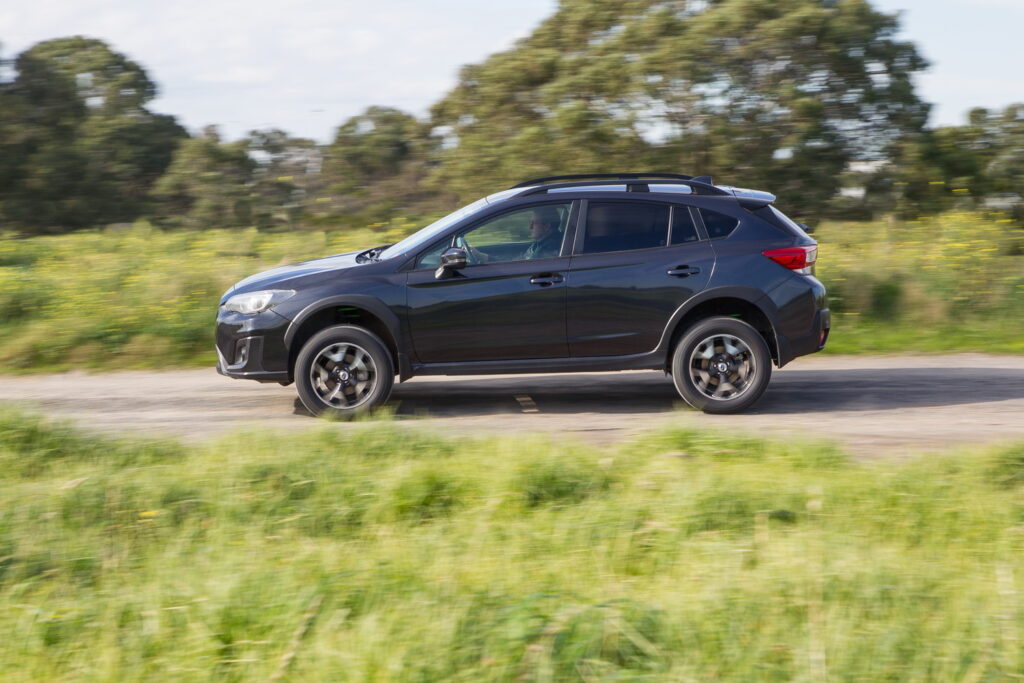
The damping design has to change from car to car, even if they’re similar – for example, the XV roughly shares its platform with the Forester (the Subaru Global Platform, as it’s called), but because many critical factors are different, the suspension tune must also be different. If both the Forester and XV hit the same bump, the XV will pitch more because while the wheelbase is only 5mm shorter, the XV has less mass in the rear than the Forester. So if an XV ran the Forester’s front end suspension it’d be a bouncier ride than ideal, with the knock-on negative effects on handling.
If that sounds complicated that’s because it is. And that’s why you need tools like a dyno to precisely model components such as springs, shocks and bump stops, but you also need the engineering ability to translate the measurements to a comprehensive physics model of vehicle behaviour, and the skills to put it all together to create a suspension package that works in harmony. Taking the time at the design stage, and having the ability, experience and testing facilities is way more effective and precise than hundreds of trial-and-error test runs which end up changing one variable but not really understanding the myriad knock-on effects elsewhere.

Effective suspension design delivers safe and controlled performance across all terrains, minimising unwarranted pitch and roll for flat a ride and it’s also built tough for off-roading.
Think about those complexities next time you make a suspension purchase, and what sort of research and development has gone into the product. Suspension can absolutely make or break a car (literally) so it’s worth investing in a quality product that is designed for your use.

